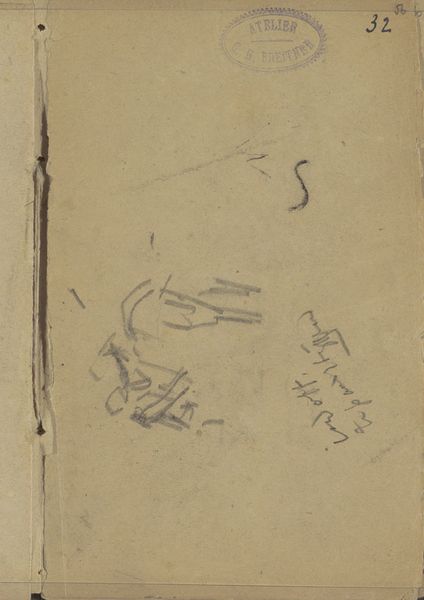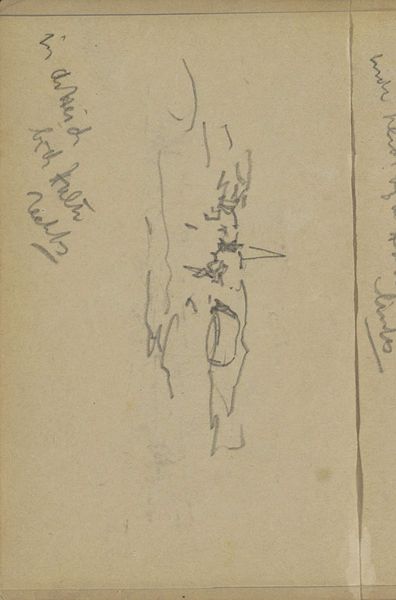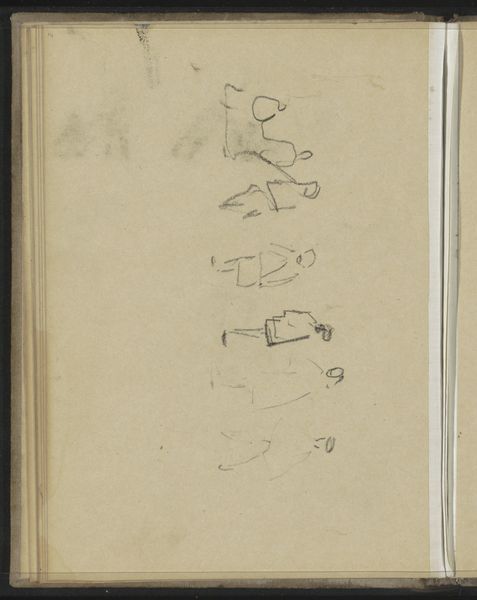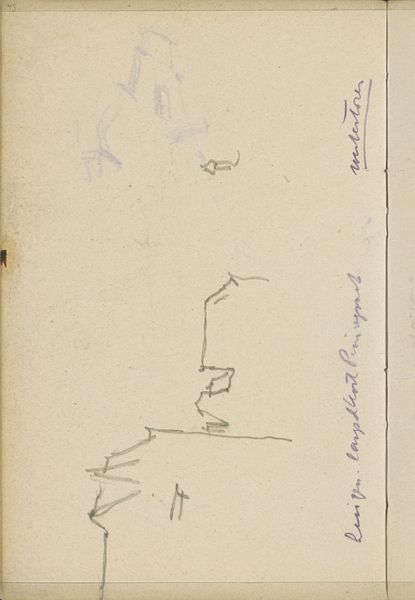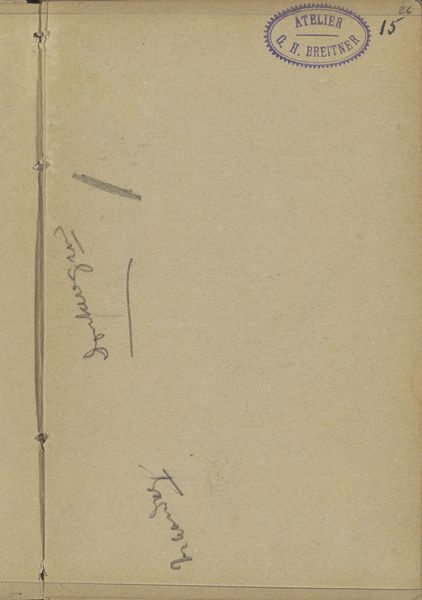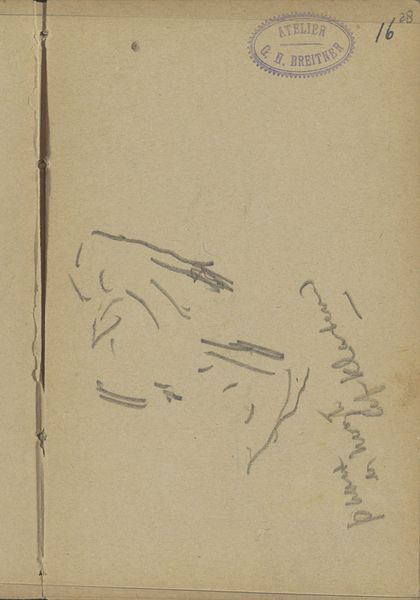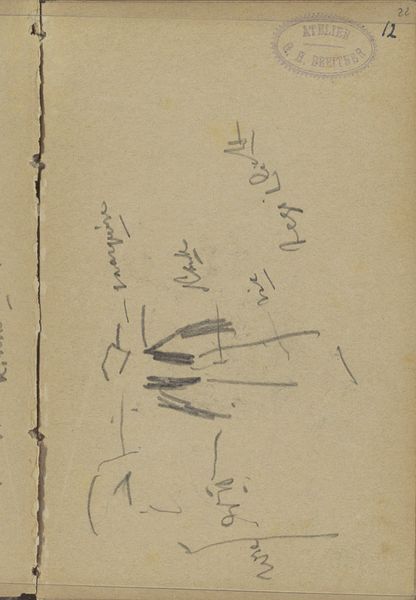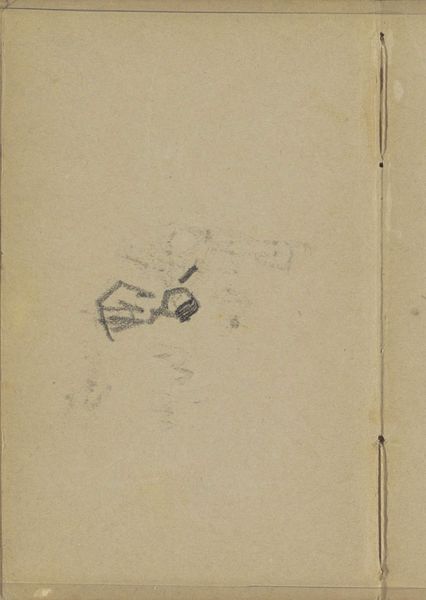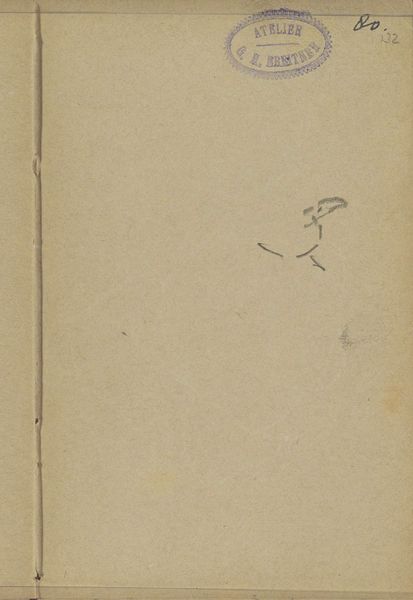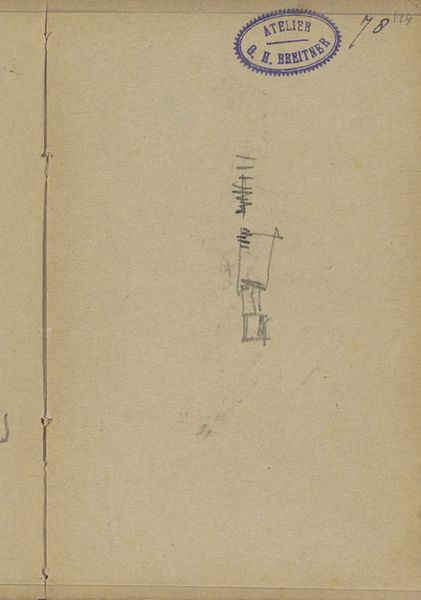
drawing, paper, pencil
#
drawing
#
impressionism
#
landscape
#
figuration
#
paper
#
pencil
Copyright: Rijks Museum: Open Domain
Curator: George Hendrik Breitner rendered this pencil drawing, named "Kar," sometime between 1887 and 1891. It's currently held at the Rijksmuseum. The swift, gestural lines...what strikes you initially? Editor: The immediate impression is one of ephemeral lightness. The sparse lines almost float on the paper, and the composition feels fragmented. There's a sense of capturing a fleeting moment, but it leaves me searching for what it all represents. Curator: The "Kar," referring to a type of cart or wagon, is indeed suggestive. Breitner was deeply immersed in Amsterdam's working-class districts at the time. Carts such as this become commonplace signifiers of labour and the gritty reality of urban life for the working class. One can see some faint words scrawled onto the artwork too, which perhaps serves to add another dimension to its contextual understanding. Editor: I notice the sharp contrast between the heavier marks used to define the figures pulling the cart and the almost ethereal sketch of the cart itself. It seems deliberate, like the artist wants us to focus on the figures involved. Curator: Precisely! It speaks to the psychological weight borne by these workers. The sketchy, almost unfinished nature might suggest the precariousness of their existence. These kinds of objects become visual shorthand, instantly evoking social narratives. Editor: So, the drawing itself isn't merely representational, but it carries symbolic freight about societal struggles? I'm compelled by the stark simplicity, the refusal of ornamentation. In terms of materiality, even the choice of paper and pencil feels intentional. It aligns with a raw, unvarnished perspective. Curator: It is like glimpsing an honest impression, resisting any beautification. It is less about artistic prowess and more about transmitting experience. The unpolished form becomes as important as what it portrays. Editor: Yes, it encourages the viewer to actively engage with that gritty experience, to complete the story suggested by the fragment, an incomplete sensory event. I came to think differently after our discussion. I have moved from just an aesthetic read into one concerning wider meaning. Curator: Indeed. This simple sketch serves as a stark, symbolic glimpse into a past still resonant today, wouldn’t you agree?
Comments
No comments
Be the first to comment and join the conversation on the ultimate creative platform.
